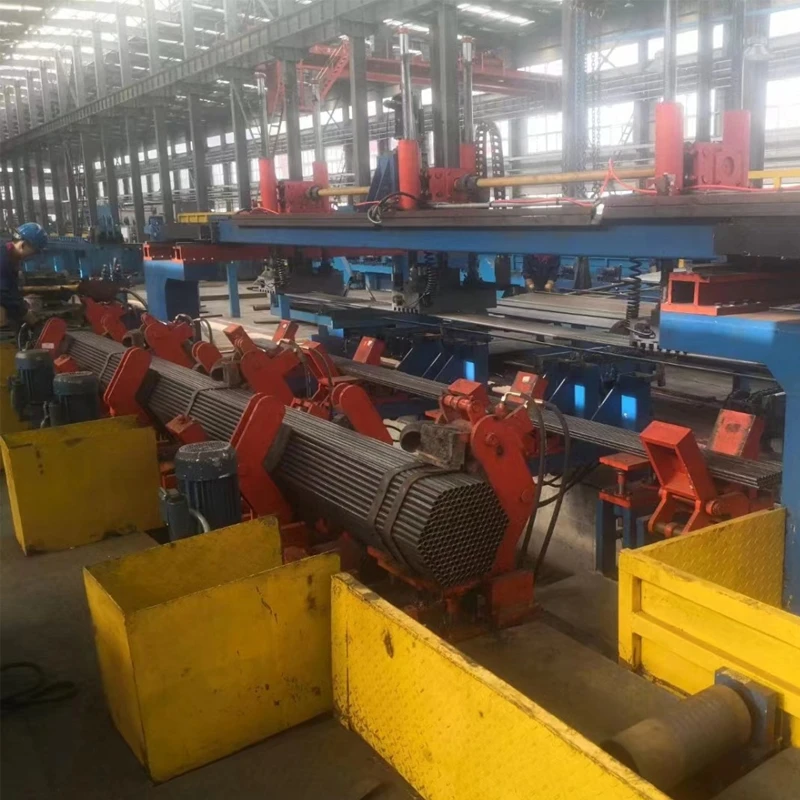Innovative Solutions for Square Tube Roll Forming Machinery and Their Applications
The Evolution and Importance of Square Tube Roll Forming Machines
In the ever-evolving landscape of manufacturing, the technology behind metal fabrication has seen remarkable advancements. One of the pivotal innovations in this realm is the square tube roll forming machine. This specialized equipment is designed to produce square tubes from metal sheets through a continuous bending process. Understanding its functionalities, benefits, and applications provides valuable insights into the increasing reliance on this machine in various industrial sectors.
What is a Square Tube Roll Forming Machine?
A square tube roll forming machine consists of multiple sets of rollers that gradually shape flat metal strips into square tubes. This process involves feeding a metal sheet into the machine, where it passes through a series of rollers that incrementally bend and form the material. The final product is a precisely shaped square or rectangular tube with uniform dimensions and smooth edges. These machines can handle different materials, including mild steel, stainless steel, and aluminum, making them versatile for various applications.
Advantages of Roll Forming Technology
The roll forming process offers several advantages over traditional fabrication methods such as welding or stamping. Firstly, it provides high production efficiency, enabling manufacturers to produce long lengths of square tubes at a rapid rate. The continuous operation of the machine minimizes material waste, as it can be adjusted to create custom lengths based on specific requirements. Additionally, the process yields consistent and uniform shapes, reducing the need for secondary processing.
Another key benefit is the cost-effectiveness of roll forming. By optimizing material usage and minimizing labor costs, manufacturers can achieve significant savings. The durability of the equipment and the longevity of the products also contribute to decreased operational costs over time.
Applications Across Industries
square tube roll forming machine

Square tube roll forming machines find application in various industries, including construction, automotive, manufacturing, and furniture production. In the construction sector, square tubes are commonly used for structural supports, railings, and frames due to their strength and reliability. In the automotive industry, they are utilized in the production of components such as frames and chassis, where lightweight yet robust materials are essential for performance and safety.
Furthermore, in manufacturing, these tubes are often employed in conveyor systems, shelving, and fixtures. The furniture industry has also benefited from this technology, utilizing square tubes in the design of tables, chairs, and storage units, where aesthetics and functionality are paramount.
Innovations and Future Trends
As technology progresses, so does the sophistication of square tube roll forming machines. Recent innovations include automation and integration with computer numerical control (CNC) systems, which enhance precision and adaptability. Smart machines equipped with sensors and predictive maintenance technologies are also emerging, allowing for real-time monitoring and improved overall productivity.
Moreover, with the growing emphasis on sustainable manufacturing practices, the ability to recycle scrap material and minimize waste in the roll forming process aligns well with environmental goals. The increasing demand for lightweight and high-strength materials is also pushing the development of new alloys and materials that can be processed efficiently by these machines.
Conclusion
In conclusion, the square tube roll forming machine stands as a testament to the advancements in manufacturing technology. Its efficiency, cost-effectiveness, and versatility make it an essential tool across various industries. As innovations continue to shape the future of metal fabrication, these machines will undoubtedly play a crucial role in meeting the challenges of modern manufacturing while paving the way for sustainable practices and improved product designs. Embracing this technology not only enhances production capabilities but also contributes to the broader goals of efficiency and environmental responsibility in manufacturing.
-
High Frequency Straight Seam Welded Pipe Production Line|BzZhou Xinghua|Precision Welding&EfficiencyNewsJul.30,2025
-
High Frequency Straight Seam Welded Pipe Production Line - BzZhou Xinghua|Precision Engineering&EfficiencyNewsJul.30,2025
-
High-Frequency Straight Seam Welded Pipe Production Line-BzZhou Xinghua Machinery Equipment Manufacturing Co., LTD.NewsJul.30,2025
-
High-Frequency Straight Seam Welded Pipe Production Line-BzZhou Xinghua Machinery Equipment Manufacturing Co., LTD.|Precision Manufacturing, High EfficiencyNewsJul.30,2025
-
High Frequency Straight Seam Welded Pipe Production Line-BzZhou Xinghua Machinery Equipment Manufacturing Co., LTD.|Precision Steel Pipe Manufacturing&Industrial EfficiencyNewsJul.29,2025
-
High-Frequency Straight Seam Welded Pipe Production Line-BzZhou Xinghua Machinery Equipment Manufacturing Co., LTD.|Precision Steel Pipe Manufacturing&Industrial EfficiencyNewsJul.29,2025


